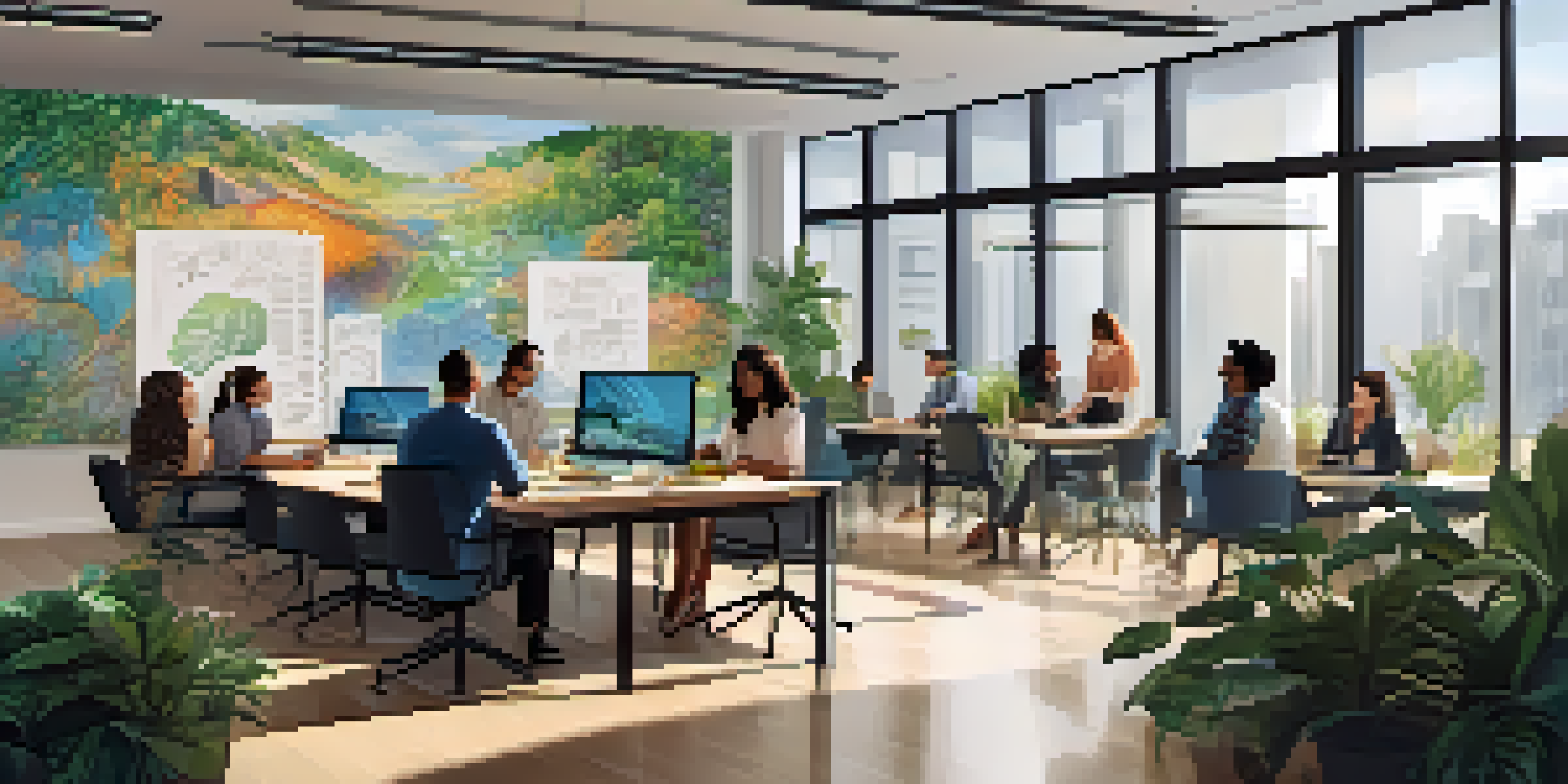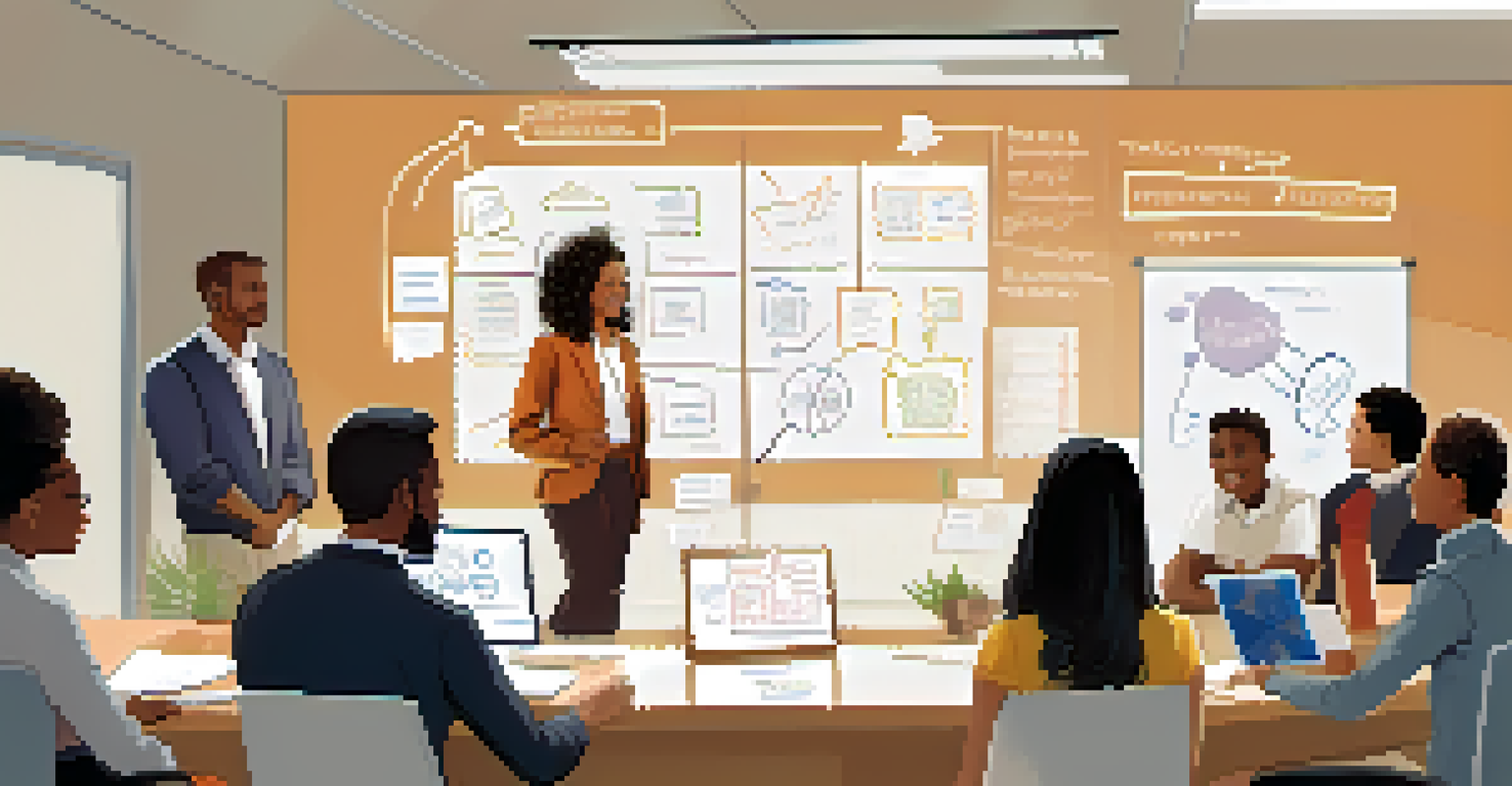Building Resilience in Learning Experience Design Teams

Understanding Resilience in Learning Experience Design
Resilience in learning experience design refers to a team's ability to adapt to challenges and setbacks. It’s about bouncing back from failures and using them as stepping stones for future success. This quality is crucial in a field that constantly evolves with technology and learner needs.
It is not the strongest of the species that survive, nor the most intelligent, but the one most responsive to change.
When designers embrace resilience, they create an environment where innovation flourishes. They learn to view obstacles as opportunities for growth rather than insurmountable barriers. This mindset not only improves individual performance but also enhances team dynamics and project outcomes.
Moreover, resilience encourages a culture of feedback and continuous improvement. Teams that value this trait are more likely to seek constructive criticism and use it to refine their approaches. Ultimately, this leads to more effective learning solutions that meet the needs of diverse learners.
The Role of Leadership in Fostering Resilience
Leadership plays a pivotal role in cultivating resilience within design teams. Leaders who model resilience set the tone for their teams by demonstrating how to navigate challenges effectively. By sharing their own experiences of overcoming obstacles, they provide relatable examples for team members.

Additionally, supportive leaders create a safe space for experimentation. When team members feel empowered to take risks without fear of failure, they're more likely to innovate and collaborate. This not only strengthens individual resilience but also builds a cohesive team spirit.
Resilience Fuels Innovation
Embracing resilience helps design teams turn challenges into growth opportunities, fostering a culture of innovation.
Furthermore, leaders should prioritize open communication and regular check-ins. By maintaining transparency and offering guidance, leaders can help their teams stay focused and motivated, even during tough times. This support is essential for fostering a resilient culture that thrives on collective strength.
Encouraging a Growth Mindset in Teams
A growth mindset is critical for resilience in learning experience design. It’s the belief that abilities and intelligence can be developed through dedication and hard work. Teams that adopt this mindset view challenges as opportunities to learn rather than as threats to their competence.
Resilience is the ability to attack while running away.
Encouraging team members to embrace a growth mindset can involve providing training on how to handle feedback and setbacks constructively. For instance, workshops that focus on problem-solving skills can equip them with tools to navigate difficulties with confidence. This proactive approach fosters an environment where learning is prioritized over merely achieving results.
Moreover, celebrating small wins and progress is vital to reinforcing a growth mindset. Acknowledging efforts, regardless of the outcome, helps team members feel valued and motivated. This recognition builds resilience by reminding everyone that every step, no matter how small, contributes to the overall journey.
Building Trust Within the Team
Trust is the foundation of any resilient team. When team members trust one another, they're more likely to communicate openly and support each other through challenges. This camaraderie can make a significant difference when navigating the complexities of learning experience design.
To foster trust, teams can engage in team-building activities and collaborative projects. These experiences allow members to learn more about each other's strengths and weaknesses, creating a sense of unity. Additionally, transparent decision-making processes help build trust by ensuring everyone feels included and valued.
Trust Strengthens Team Dynamics
Building trust among team members enhances communication and support, which is crucial for navigating complexities in design.
As trust grows, so does the team's resilience. Members will feel more comfortable sharing ideas, seeking help, and taking risks. This collaborative spirit not only enhances the team's ability to face challenges but also leads to richer and more innovative learning experiences.
Emphasizing Continuous Learning and Development
Continuous learning is a cornerstone of resilience in learning experience design. In a field that evolves rapidly, keeping skills fresh and relevant is essential. Teams that prioritize ongoing professional development are better equipped to adapt to changes and embrace new trends.
Encouraging participation in workshops, conferences, and online courses can significantly enhance team members' skills and knowledge. This investment in growth not only boosts individual confidence but also strengthens the entire team's capabilities. When everyone is learning together, resilience becomes a shared value.
Additionally, creating a culture of knowledge sharing can amplify this effect. Regular knowledge exchange sessions allow team members to share insights and lessons learned from their experiences. This collaborative approach fosters a learning environment where resilience is celebrated and continuously nurtured.
Practicing Self-Care to Enhance Resilience
Self-care is often overlooked in high-pressure environments, but it is vital for building resilience. Design teams that prioritize well-being can better manage stress and avoid burnout, which are common in creative fields. Encouraging team members to take breaks and engage in activities they enjoy is essential.
Incorporating wellness initiatives, such as mindfulness sessions or team outings, can greatly enhance team morale. These activities provide a necessary respite and promote a healthier work-life balance. When team members feel cared for, they're more likely to approach challenges with a positive mindset.
Continuous Learning is Key
Prioritizing ongoing professional development equips teams to adapt to industry changes and nurtures a resilient culture.
Moreover, fostering an open dialogue about mental health can help destigmatize the conversation around self-care. When teams feel comfortable discussing their struggles, it creates a supportive environment where resilience can thrive. This collective understanding strengthens the team bond and enhances overall performance.
Adapting to Change as a Team Strength
Adaptability is a key component of resilience, especially in the fast-paced world of learning experience design. Teams that can pivot quickly in response to new information or changing circumstances are more likely to succeed. This flexibility allows them to stay ahead of trends and meet evolving learner needs.
Encouraging team members to embrace change rather than resist it can be achieved through open discussions about potential shifts in the industry. By involving everyone in the conversation, teams can collaboratively strategize ways to adapt. This proactive approach not only prepares them for change but also fosters a culture of innovation.

Additionally, celebrating adaptability as a strength reinforces its importance within the team. Recognizing and rewarding those who demonstrate flexibility encourages others to do the same. Ultimately, being adaptable not only enhances resilience but also positions the team as leaders in the learning experience design landscape.